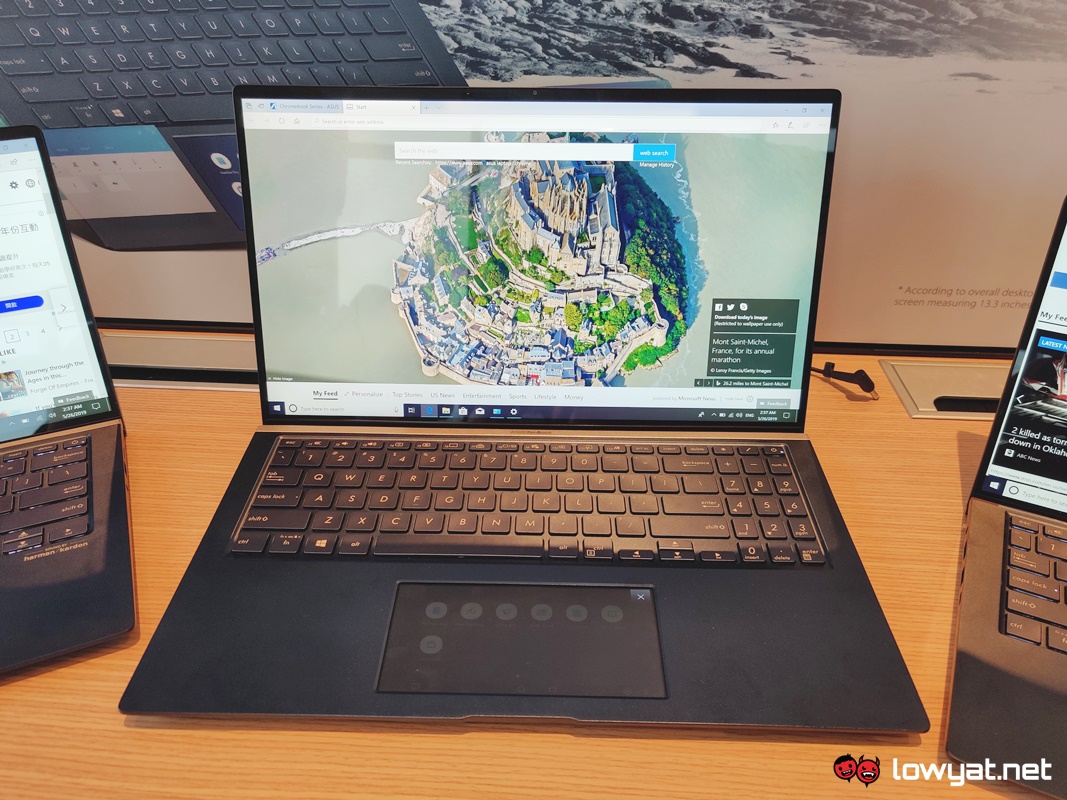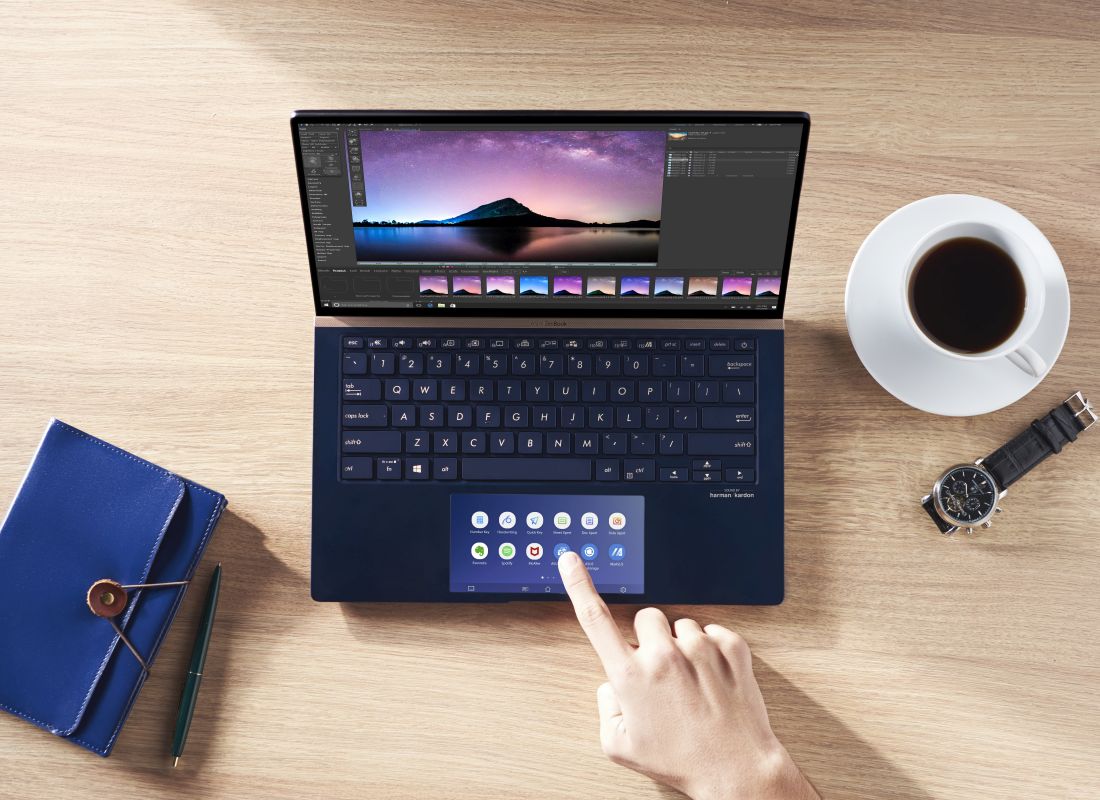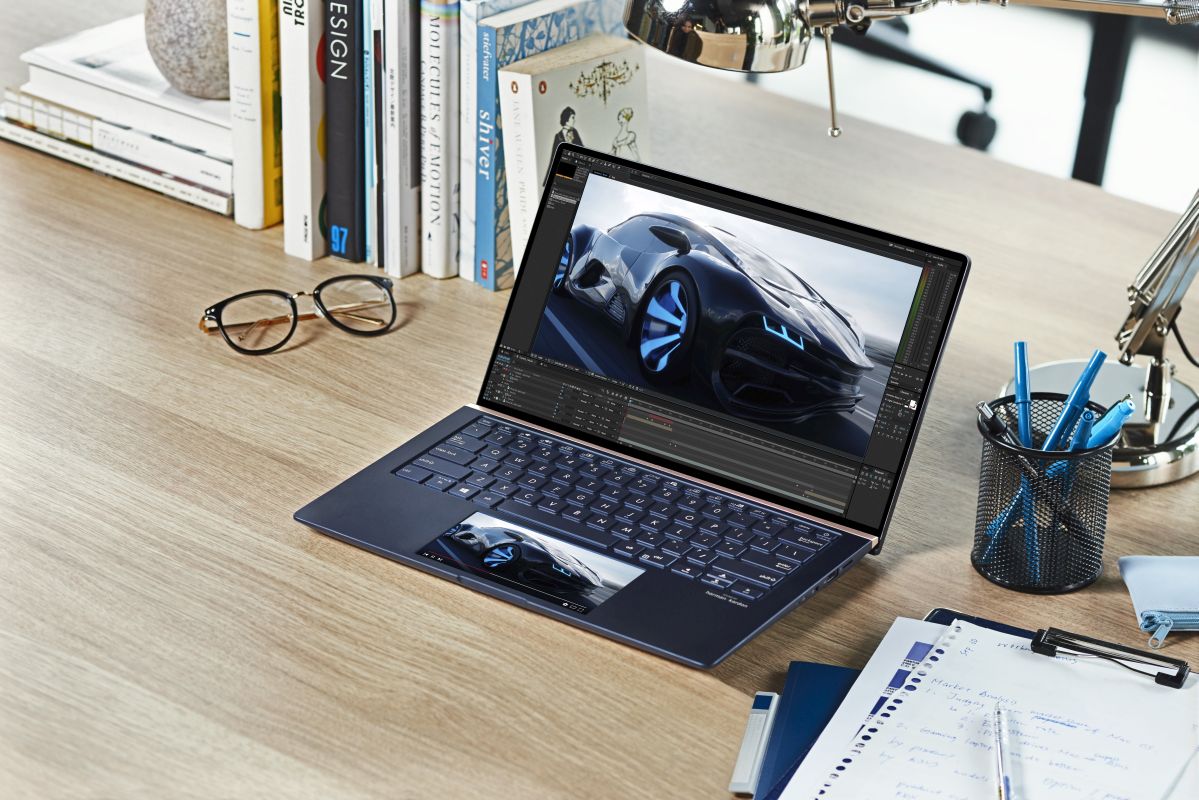Known for its light and thin form factor, the new ZenBook machines continue that trend with up-to-date technology and features. As a start, and like its VivoBook brethren, all ZenBook variants are equipped with ASUS’ new and improved ScreenPad 2.0 interactive touch display. ASUS says that having the ScreenPad 2.0 expands productivity on its notebooks. Providing additional features such as a digital numeric pad, a second display, as well as a control pad for media-based players such as Spotify and YouTube. One new feature of the ScreenPad 2.0 is the ability to switch around the position and accessibility of the apps that appear on it. It’s a feature that is similar to the way you would handle the way you move your apps around on the iPhone or Android smartphone.
Display-wise, all models of the new ZenBook range uses the brand’s NanoEdge display technology with a 178-degree wide-view angle. Further, the maximum display resolution for the ZenBook latter two models are set at Full HD (1920 x 1080), while the ZenBook 15’s top-tier SKU can be fitted with a 4K NanoEdge display. Specs-wise, the new ZenBook 13, 14, and 15 will ship out Intel’s 8th generation Core CPUs. Specifically, consumers will have a choice between a Core i5-8265U or a Core i7-8565U processors. On top of that, each model can have 8GB or 16GB of LPDDR3-2133MHz RAM, plus up to 1TB of storage in the form of an NVMe SSD.
Surprisingly, the new ZenBook models don’t seem to carry support for the new Wi-Fi 6 bandwidth spectrum. We can’t help but feel that the absence of this feature is a missed opportunity, especially since the news VivoBooks already support the feature. For graphics output, both the ZenBook 13 and 14 ship out either with an Intel integrated UHD Graphics 620 or an NVIDIA GeForce MX250 discrete GPU. In the case of the 15.6-inch ZenBook 15, the GeForce MX250 is replaced by a GeForce GTX 1650 Max-Q, which in turn comes in a variation of 2GB or 4GB GDDR5.
Ports-wise, the ZenBook 13 and 14 get a USB 3.1 Type-C, one USB Gen2 Type-A, one USB 2.0, a HDMI port, a MicroSD card reader, and a 3.5mm audio jack. The Zenbook 15’s port count is a little different with one USB 3.1 Type-C, a USB 3.1 Gen2 Type-A, one USB 3.1 Gen1 Type-A, a HDMI port, a full-size SD card reader, and an audio jack. At the time of writing, no local pricing or availability was mentioned.


